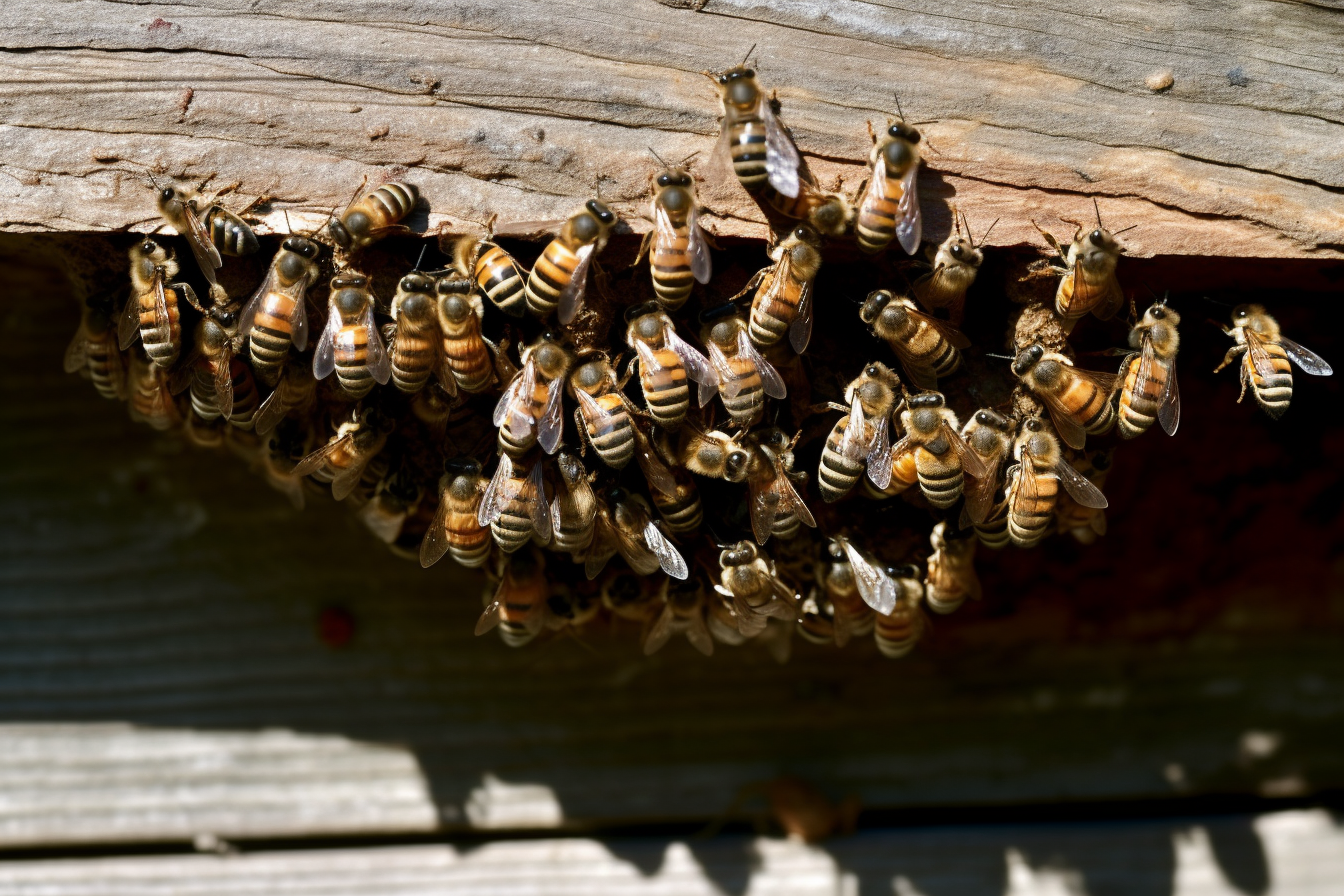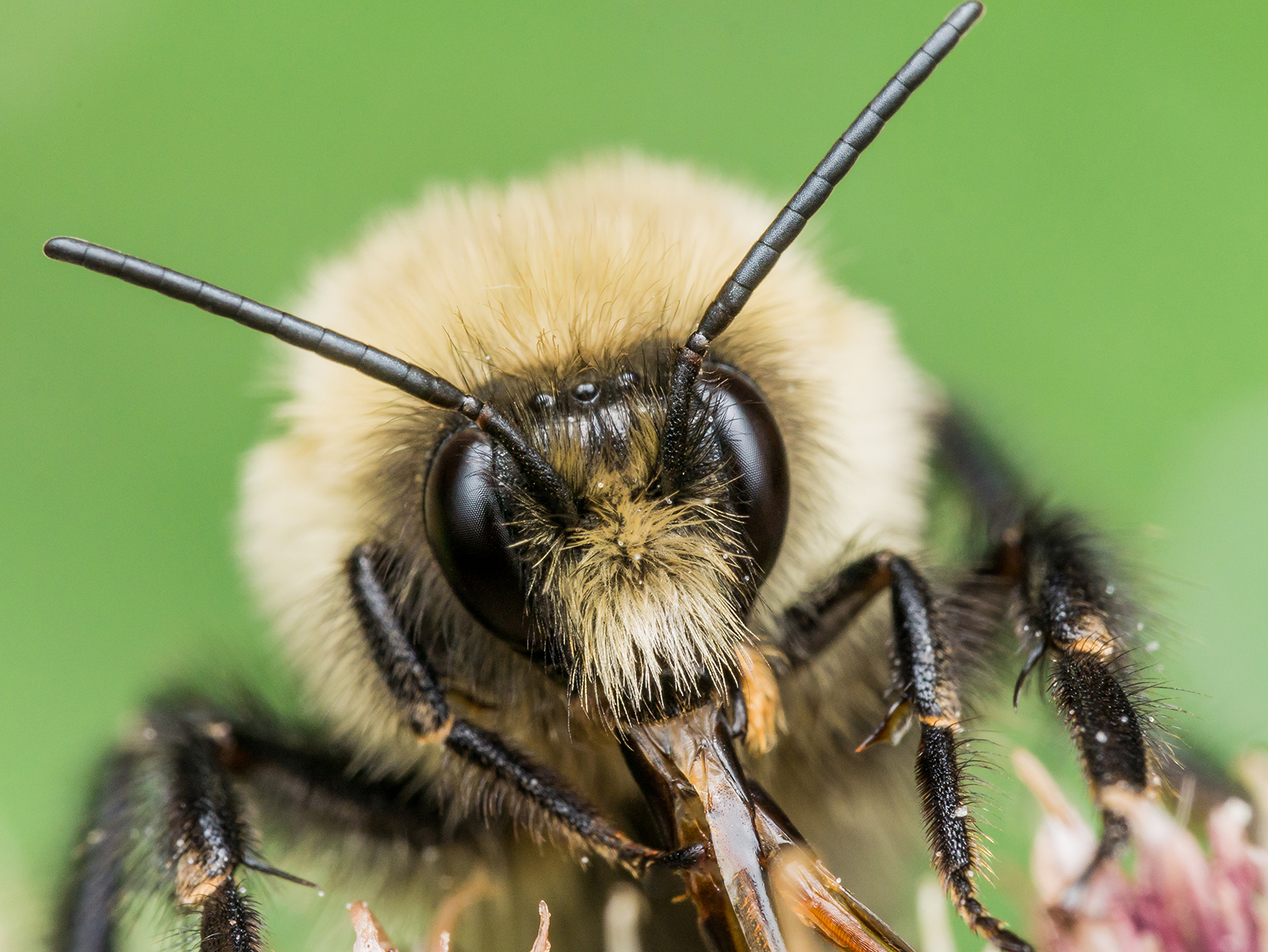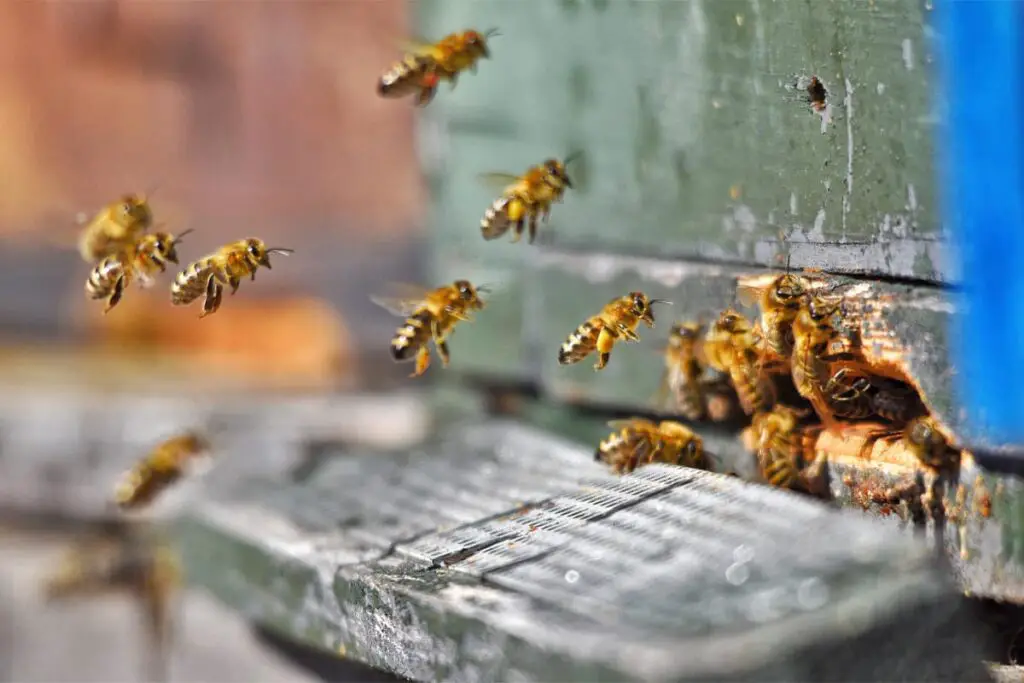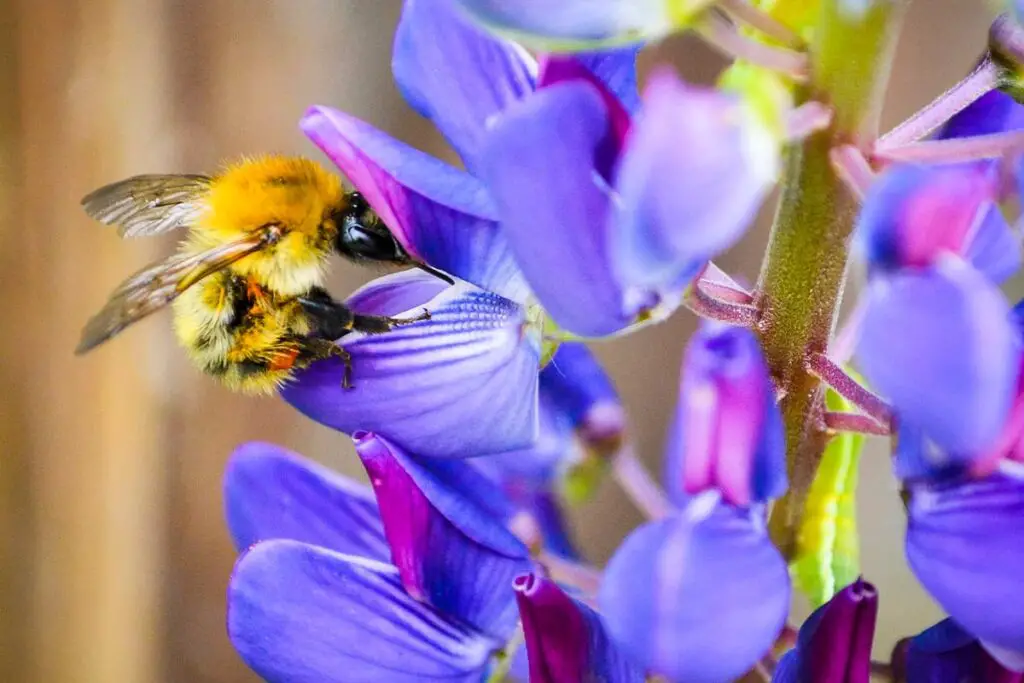
Bees are cool. No question. There is a lot to love about these fascinating creatures, but are teeth one of them? The concept of bees having teeth might sound unusual, but if you ever have a chance for a close look at these incredible insects, you might discover (as I did!) that they do possess structures that function similarly to teeth.
Bees do not have teeth like humans or other vertebrates. Instead, they have mandibles – specialized mouthparts that move outwards and inwards, serving various purposes in their daily lives. These mandibles, also known as bee “teeth,” assist bees in performing a variety of tasks, such as biting, chewing, and carrying items.
Let’s have a close look at the unique features of bees and their mandibles, and gain a deeper appreciation of their anatomy and functions in nature.
An Overview of Bee Anatomy
Mouthparts and Functions
One vital aspect of bee anatomy is their mouthparts, consisting of the mandibles, which serve as their ‘teeth’. These mandibles have grooved edges that are called teeth, and which play a pivotal role in various bee activities.
Different bee species have mandibles with varying shapes and numbers of teeth. While some aggressive bees have sharp teeth for crushing prey, others may have more rounded or fewer teeth, as noted by Misfit Animals.
Bees use their mandibles for a multitude of purposes. For instance, queen bees emit pheromones through their mandibles to control the colony. Most bees use these mouthparts for chewing or grasping whenever required. Additionally, some bees may resort to their mandibles as a method of defense.
Aside from mandibles, other essential parts of bee anatomy include the head, thorax, and abdomen. The head contains vital elements like eyes, antennae, and a tiny yet functional brain, while the thorax serves as the base for the legs and wings (PerfectBee).
Do Bees Have Teeth?
When thinking about bees and their defensive capabilities, most people imagine their stingers, not their teeth. However, bees do indeed have teeth, though they are not like the ones we have. Bees have a body part known as mandibles, which functions similarly to teeth.
The mandibles are located on either side of a bee’s mouth and are used for various tasks. For example, bees use their teeth-like mandibles for catching prey and chewing it before bringing it into their mouths. The appearance of these “teeth” varies, with some bees having sharp edges on their mandibles and others having more rounded teeth-like structures, which depends on the species.
Unlike our teeth, bees’ mandibles don’t require a toothbrush or dentist visits. They are uniquely suited to the species and the tasks they need to perform. For instance, aggressive bees have evolved to have sharp teeth for crushing their prey.
How Bees Collect and Consume Food
For a bee, food collection and consumption is crucial to survival and the functioning of their colony. Worker bees will gather nectar and pollen for sustenance, and have specialized structures to help them collect, process, and digest these materials efficiently.
Nectar and Pollen Collection
When a bee forages for food they use their proboscis and mandibles to collect nectar and pollen from flowers. The mandibles are quite helpful while biting and consuming pollen, while supporting the usage of the proboscis when absorbing liquid nectar.
The bee’s hind wings also have teeth-like structures that aren’t true teeth, but aid in their efficient collection of pollen. These small adaptations allow the bee to collect food for the entire colony effectively.

Food Processing and Digestion
Once the bee has collected the nectar and pollen from a flower it will start processing them. The nectar is mixed with enzymes in their honey stomach, which breaks the complex sugars into simpler sugars. This process begins the fermentation of nectar into honey, making it easily digestible for other bees in the colony.
The pollen they collect is mixed with their own saliva, which contains enzymes to break down the nutrients and make them more easily digestible. This mixture forms a substance called bee bread, which serves as the primary protein source for the growing larvae in my colony.
As a bee digests their food, the nutrients are absorbed by their body and used for energy, growth, and maintaining their overall health. This not only helps them in fulfilling their role within the colony, but also ensures the well-being of the entire hive.
Comparing Bee Anatomy to Other Insects
In this section, I will compare the anatomy of bees to other insects such as ants and wasps, as well as butterflies and moths.
Ants and Wasps
Bees, ants, and wasps all belong to the order Hymenoptera. This means that they share some similarities in their anatomy. For instance, they all have three body segments: the head, thorax, and abdomen. Additionally, they all have six legs and two pairs of wings. However, there are some differences in their mouthparts.
While bees have mandibles that some consider to be similar to teeth, ants and wasps have different types of mouthparts specialized for their feeding habits. For example, some ants have pincer-like mandibles for capturing and dissecting prey, while others have elongated mouthparts for feeding on liquids. Wasps, on the other hand, have mouthparts suited to slicing and cutting, allowing them to feed on a variety of food sources, such as insects and fruits.
Butterflies and Moths
Butterflies and moths, members of the order Lepidoptera, also differ from bees in their anatomy. Like bees, they have three body segments, six legs, and two pairs of wings. However, their mouthparts are significantly different. Instead of mandibles or teeth-like structures, butterflies and moths have a long, coiled tube called a proboscis that they use to suck up nectar from flowers.
Another difference between bees and lepidopterans is in the structure of their wings. While bees have comb-like teeth called hamuli to hold their wings together during flight, as mentioned in Honey Bee Hobbyist, butterflies and moths have larger, often colorful, scales covering their wings. These scales provide them with their distinct patterns and can also serve as a means of camouflage or warning signals to predators.
It’s fascinating how different insect groups have evolved unique anatomical features to adapt to their specific lifestyles and ecological roles.
Driven by a passion for those tiny creatures that rule our world, we at Bug Domain strive to be your go-to resource for information on insects.




